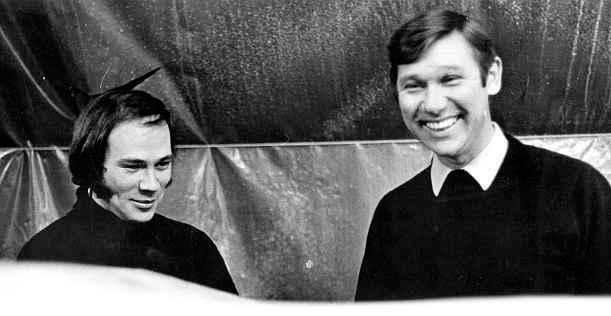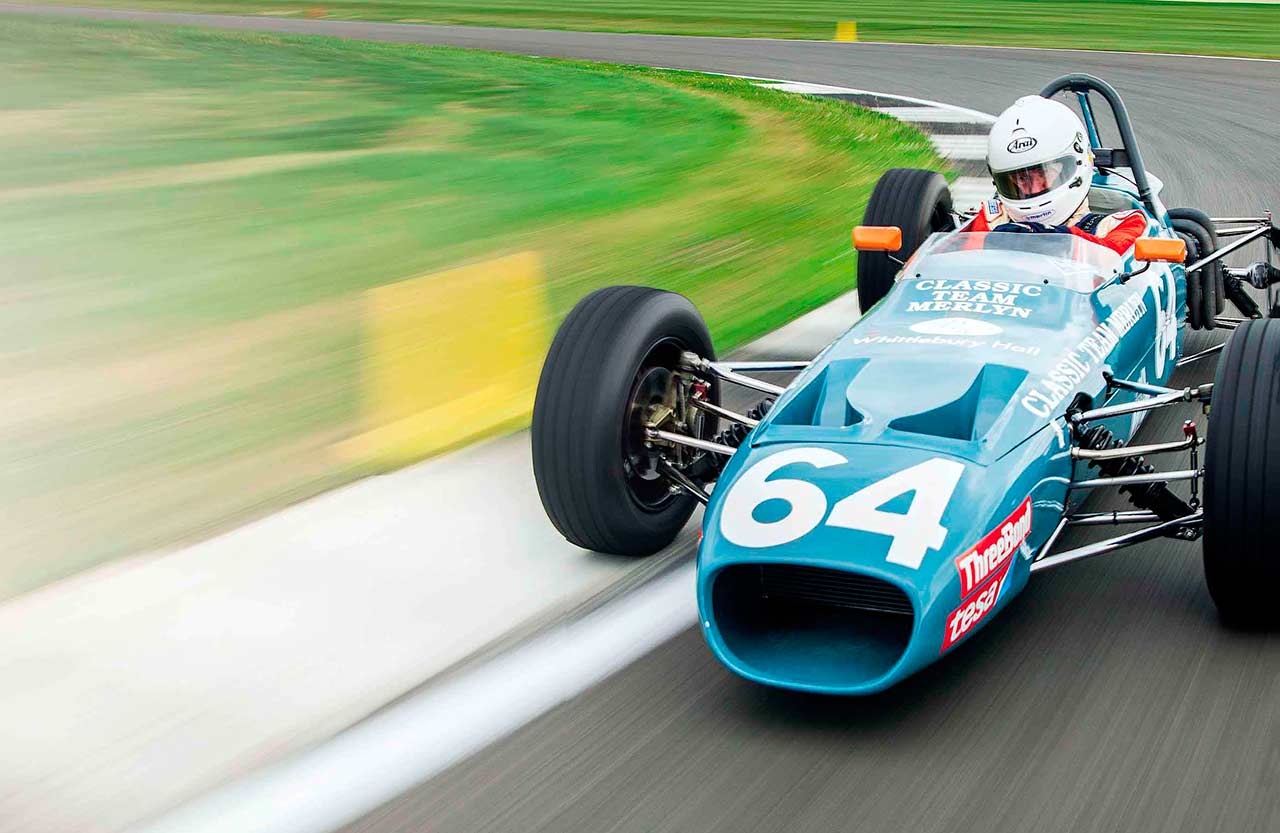
The Winning Formula 50 years of Formula Ford. In five decades, Formula Ford has seen very few changes. Mark Hales takes a lesson in minimalist racing. Photography Paul Harm.
FORMULA FORD Mark Hales tests a Cortina-engined racer
While there are other race categories still thriving five decades down the track, I can think of none that still operates to an exactly similar set of rules. Conceived originally in 1964 as a cheap option for use in race schools, Formula Ford became a National category in 1967 and since then only the brands of clutch and tyres have changed. Everything else, including the 1600cc all-iron pushrod Cortina engine, is still as supplied by the only official source, which is Ford Motor Company. And you can still buy a brand new car, slightly slimmer than its forebears in an attempt to slip better through the air, but still meeting all the same original criteria.
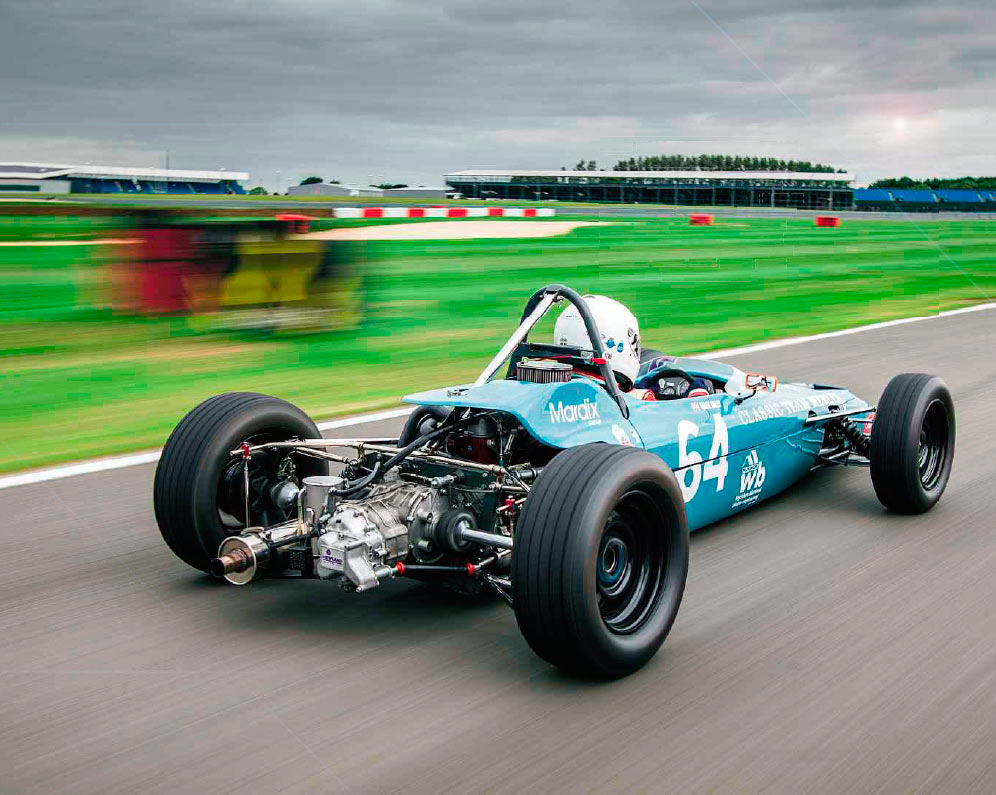
Perhaps inevitably, given the intervening years, there are now Historic (pre-1972) and Classic (pre-1982) divisions, too, both of them retro in date of manufacture but less so in performance. A good man in a 40-year-old car can still be competitive in the modern division, testament indeed to the rigidity of the rules.
The original FF1600 blueprint is very simple: a welded steel tube frame mounts a wheel at each corner suspended by simple tubular wishbones and links with coil-overdampers. The engine bolts solidly to the chassis directly behind the driver, powering a VW-based transaxle. Bodywork is minimal, aerodynamic assistance is strictly banned, brakes are simple two-pot calipers on solid discs, and wheels are steel, wearing treaded tyres – originally Dunlop, now Avon for some categories. It’s traditional and there are no frills whatsoever, but the sheer speed round a lap that a good driver could – and still can – extract from a Formula Ford is astonishing in comparison with much more complicated and powerful machinery.
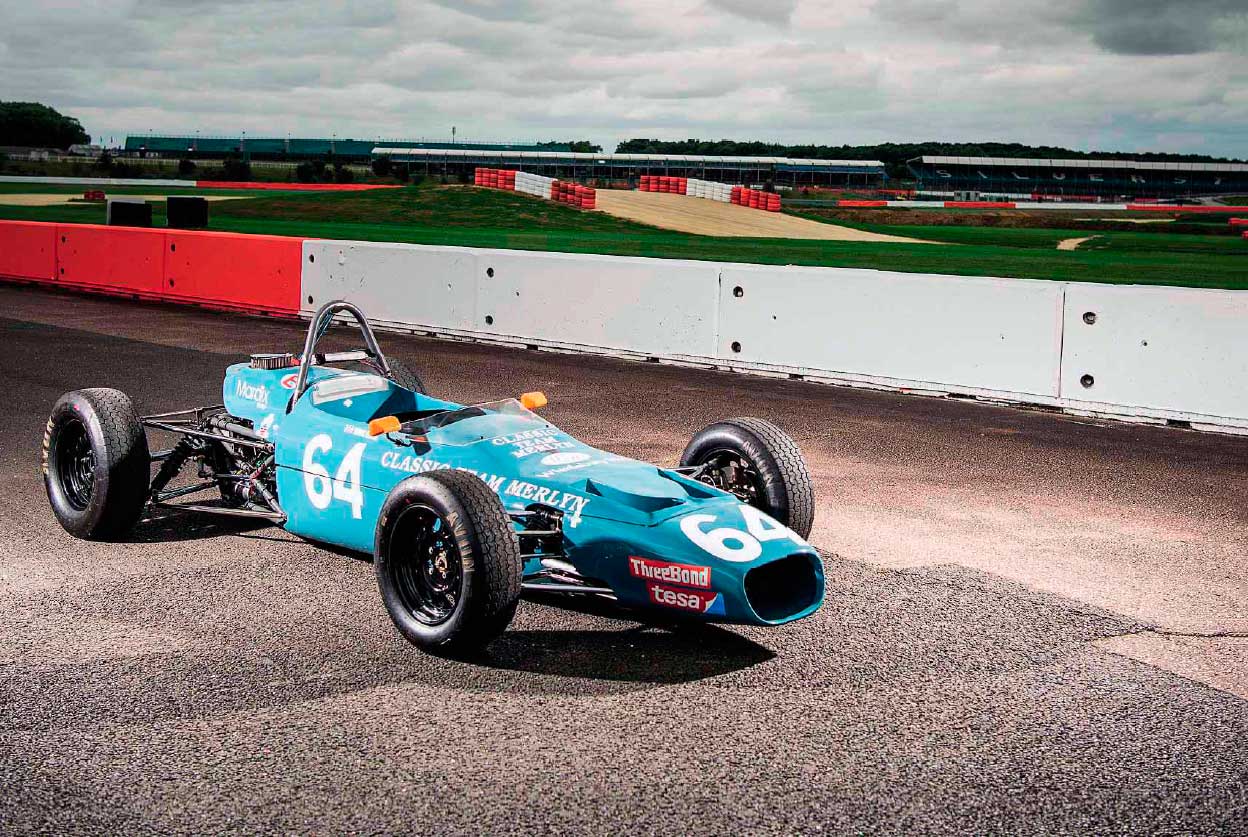
In days gone by, some of that was down to future world champions passing through on their way to greater things, but a quick look at the numbers and the layout might help to explain why it’s possible.
A Cortina engine carefully assembled by one or two specialists pushes out about 115bhp – almost certainly less than what’s managed by the diesel engine sitting in your drive – passing through a four-speed adaptation of the VW Beetle gearbox by transmission specialist Mike Hewland, to a pair of narrow 5.5x13in steel wheels wearing equally skinny tall-profile tyres. It’s all confined within a rectangle measuring about 11ft by 5.5, with another pair of similarly sized wheels (wearing slightly smaller tyres) at the front corners. Even with the iron engine, it only adds up to a little over 400kg and the total – including the occupant – must weigh no more than 500kg by the end of the race, which is not very much. An essential detail is that all the major masses – driver, fuel tank, engine and Hewland – sit low, distributed almost equally within the length and width of that rectangle. The combination of low overall mass and equal balance – left uncomplicated by a zealous lack of aerodynamic complexity and relatively low levels of adhesion – can be manipulated by an expert driver to influence that grip at either end of the car, exactly when they want, and in what percentage. It’s driver adjustability of the highest order, and it’s completely ad hoc.
The number of makes seen throughout the 50 years is vast – the category empowered builders almost as much as drivers – and there are more than 100 different models on the Classic eligibility list. Inevitably, a smaller number became more numerous in period and, for similarly obvious reasons, that tends to be the case in the Historic divisions today. Back then, I watched a great deal – National FF1600 was at many of the meetings where I was learning a little about driving in the 1970s and ’80s – but I’ve driven them only occasionally. There’s only one seat and, quite unreasonably, owners want to occupy that exclusively. So the chance to drive a 1970 Merlyn Mk17, a seminal example of the breed, at Silverstone’s Stowe circuit was a rare pleasure.
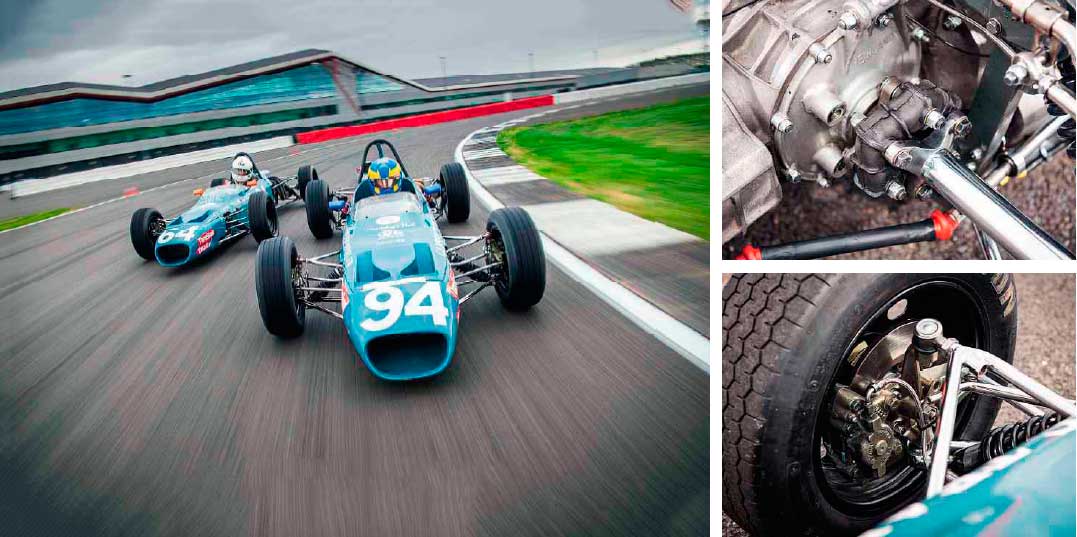
Very nicely turned out by former Merlyn racer Mike O’Brien’s Speedsport team (O’Brien raced Merlyns in 1978 and his son Michael is in contention for this year’s Historic FF1600 title, driving the sister car), it looks like a racing car should. Hard to explain that statement, so cast an eye over the pictures and you’ll see what I mean.
The instinct for line that great designers combine with best performance – Sydney Camm’s Hawker Fury and Hunter, Colin Chapman’s Lotus 25 and 49 – only proves the old epithet ‘if it looks right, it is right’, but clearly it’s something with which the Hayward brothers Clive and Selwyn – makers of the Merlyn – were also blessed.
Also in the epithets catalogue is the suggestion that you don’t so much as climb into a single-seater, you wear it like a suit, which in this case was a touch tight for my six-foot frame. Tilting the size 13s and sliding them under the dash, over the battery and down towards the pedals wasn’t a problem, and neither was lowering the body on arms and hands planted on the chassis tubes but, once in, my shoulders were tight up against the bodywork and my elbows either pinned to my ribs or resting on top of the tubes level with my shoulders.
It’s all part of the lack of compromise that defines a single-seater, but it meant I’d have to drive with hands pinching the top third of a small steering wheel. It wouldn’t be the first time. Put it out of mind and sometimes the problem goes away, and anyway, it might oblige me to drive tidily. The gearlever is down to the right, about four inches long, the gate much the same in any direction and there are only the four speeds. Dash is simple: revcounter, oil pressure and water temperature gauges, all with needles that creep like spiders, and master, ignition and rain-light switches. And whoever said you wear one was right. The bodywork is barely wider than the driver and I can reach out and touch the track on either side. And the visibility is panoramic. No pillars, doors or dashtop, and the front wheels look almost close enough to touch, sticking out wide on bony suspension. Must remember the rear end is wider still as I pull out of the garage.
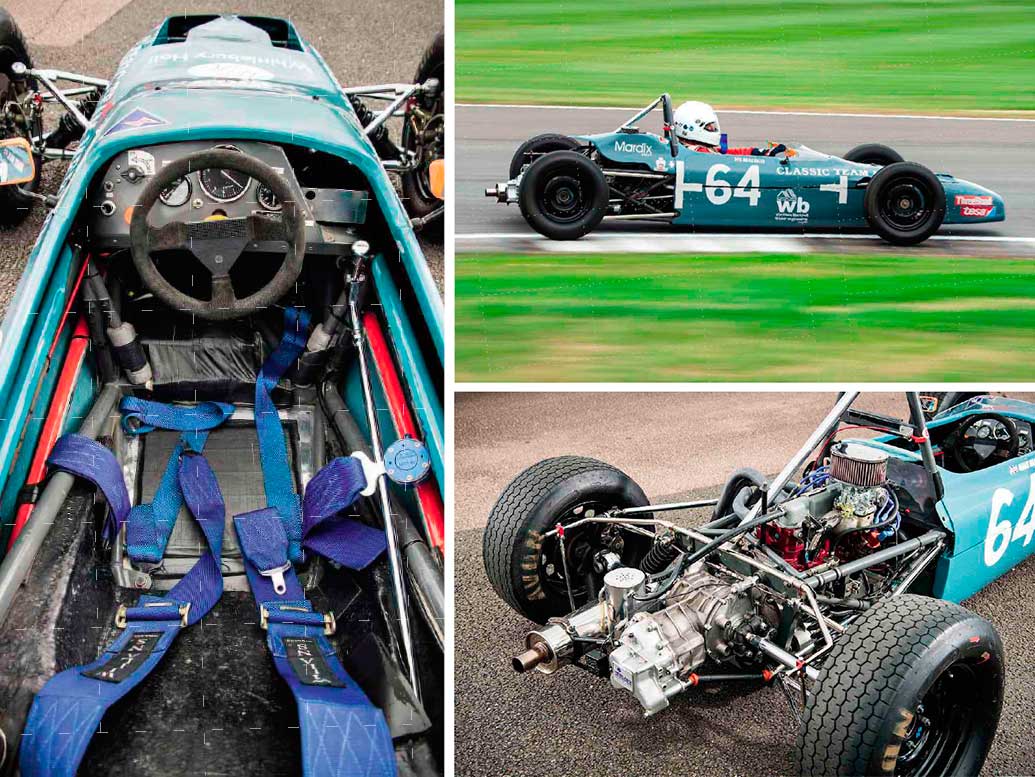
The Cortina engine starts instantly and ticks over at about 500rpm, which it should because it’s a completely standard volume item of which millions were made. Careful assembly – the process of ‘blueprinting’, which ensures that it meets all the design specifications exactly – ups the power from the original 88bhp at 5400rpm.
Call it 30%, a boost that’s hard to believe given that there really are no modifications to the original spec – the rules see to that. Equally surprising from the driving seat is the way it picks up, spinning freely to 6500rpm and a bit more if you need to save a shift. Unlike a modern engine, it will blow up if you buzz it properly, so there’s a bit more driver management involved than for the paddle-shifters.
I dribble out of the pits – the original-spec Cortina clutch is road-car easy – then squeeze on the power. It’s not a massive surge but it’s immediately involving. The chassis reads the ripples in the surface, the wheels patter up and down, sending little jiggles back to the steering, and the wind swirls gently through the cockpit. In a trice, the needle says 6000. A flick of the wrist finds the next gear. Instant, but tactile: you hear the result and feel it, too. Do it slightly too slowly and the dogs grate; quicker is better and needs less effort. Snicks in seamlessly. Soon it’s instinctive; think the shift and you find it’s done.
Meanwhile the Silverstone school circuit is a bit tight, lots of second gear, but is that the rear end waltzing gently from side to side as I get on the brakes? Not sure. Michael said he sets the car up soft so you feel everything. Aim round the corner and tread the power. The steering is beautifully sharp but, as I bring in the gas, the front end noses slightly wide and I have to back off to tuck it back in. Think another gear. Now back down again for the left-right- left. Whoa! I eased it one way then the other and now the tail is definitely waltzing and I’m too wide for the second entry. Was it because I gave it too much gas too soon, or did it happen when I lifted with lock applied? I need to think about this.
Mike listens patiently then adds a couple of damper clicks at the rear ‘just to help you into the corners’, and a turn towards the front on the brakes. I’d mentioned the weaving at the end of the straight. ‘Another ten then. Off you go.’ OK, I’ll try something slightly different. I’ll brake harder and see if I can load up the nose, get it deeper into the corner then settle the rear with some power. Damn!
Now I’m locking the fronts into the hairpin and the rear has become snappy everywhere else. Probably should have left things alone until I got my head round it. And when I do get the front loaded and in, there’s too much of a lunge for the corner. I have to correct before I can get on the power. Hmm.
What was it Jackie Stewart said? ‘It’s not where you get on the brakes, it’s where you come off them.’ I manage to string everything together a bit better before returning to the pits, but even if it’s great fun to hoon it and tweak the car into a slide as you go in, it doesn’t feel smooth and consistent, or quick. Mike resists any temptation to smile. ‘I’ll put it back how it was,’ he smiles.
It was only a turn on the bias and a click or two on the dampers, but there’s a clue, surely. Light but softly suspended. Not much grip. ‘It’s all about the exit speed,’ says young Michael. ‘You have so little power that tidy is best.’ Well, yes, but how to achieve it. The sensitivity of the car is a bonus I’m not used to of late, something to do with driving a V8 TVR, but I begin to realise it’s not the rate of input – I’ve learnt enough to make those gentle and proportionate. It’s the timing. Come on, this is what I teach my students. ‘Another ten then?’
Think about what Stewart said. Don’t try to brake later; that always makes you press the pedal too hard and stand the car on its nose. Instead, brake at the same point but just ease off the pedal slightly sooner and let the car run into the corner. That’s better. I can feel it turn but it’s not lungeing for the apex. Remember to aim for the exit, and wait… then squeeze on the power. It’s calmer, but still not easy to time it right. Sometimes I end up carrying too much speed in and then the front washes wide; sometimes not enough and the Merlyn doesn’t turn so I end up dragging on the steering. What a brilliant reminder, though, of all that’s important in the driver’s art. Wish I’d been a bit less cramped.
The thing is, I experience three or four different cars without touching anything on the set-up – other than the fiddling I don’t need – and the rest is all done by improvisation inside the cockpit. And the car responds in the same way to a similar input every time. How good is that? Plus I don’t have to think about looking after the brakes, or tyres, or anything. The car is exactly the same after ten laps as it was at the beginning. Get everything together in the right order and correct proportion, and a Formula Ford like the Merlyn will deliver a reward. The size of the bonus is all down to you.
‘YOU DON’T SO MUCH AS CLIMB INTO A SINGLE-SEATER AS WEAR IT LIKE A SUIT – IN THIS CASE A TOUCH TIGHT’
TECHNICAL DATA FILE SPECIFICATIONS 1970 Merlyn Mk17 Formula Ford 1600
Engine 1598cc four-cylinder, OHV, Weber twin-choke downdraught carburettors
Power 112bhp @ 6100rpm (approx)
Torque 113lb ft @ 4100rpm (approx)
Transmission Four-speed manual Hewland transaxle, rear-wheel drive
Steering Rack and pinion
Suspension Front: double wishbones, coil springs, telescopic dampers, anti-roll bar. Rear: transverse links, radius rods, coil springs, telescopic dampers, anti-roll bar
Brakes Discs, inboard at rear
Weight 400kg (approx)
Top speed 130mph (depending on gearing)
0-60mph 6.0sec (approx)
THE LEGEND OF MERLYN
The people behind these Formula Fords certainly wrought their own magic.
The Merlyn story is simpler than many. Selwyn Hayward founded Colchester Racing Developments in 1960, initially to build front-engined Formula Junior racing cars, which he also drove. Hayward was joined a few years later by his younger brother Clive and, during the next two decades, the brothers went on to build a whole range of elegant single-seater and sports cars under the Merlyn banner.
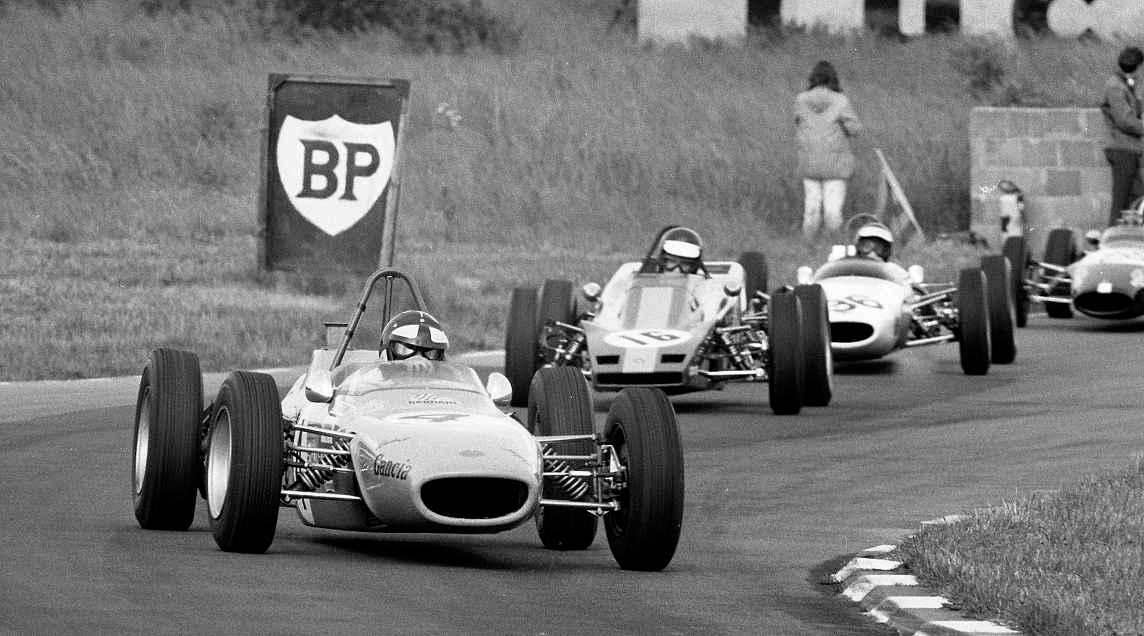
‘It was always a labour of love,’ Clive says. ‘Still is. It wouldn’t make a career!’ That said, by 1978-1979 more than 600 Merlyns had rolled out from the Colchester factory, of which Clive reckons probably ‘four or five hundred’ were Formula Fords. ‘America was a big market for us; that and the Jim Russell race school.’ The remaining 100 or so catered for the Formula Junior, Formula 3 and Formula 2 single-seater categories, and the then-popular sports racing category in which a Merlyn Mk4 or Mk6 was a direct competitor with the Lotus 23.
‘You couldn’t do it now,’ says Clive. ‘A lot of the best drivers didn’t have any money, but there was a hell of a lot of enthusiasm. Everybody wanted to be involved.’ Formula Ford 1600 is the category with which most associate the Merlyn name and there were some well-known drivers – Chris Irwin, James Hunt, Jody Scheckter, Emerson Fittipaldi, Tony Brise, Tim Schenken and many more – but, as the 1980s dawned, the Haywards felt it was time to stop. ‘It became such a seasonal business,’ Clive says. ‘It was difficult to keep people paid throughout the winter, plus the dollar was really weak so the American thing was less good. Then we lost the Jim Russell contract to Van Diemen. It was the right time to stop making cars.’
Selwyn Hayward died in 2012 and the engineering and parts manufacture, which had carried on where the cars left off, closed its doors in 2015. Clive is still very much an enthusiast though – ‘well, if you love motor sport…’ – and he was happy to allow Mike O’Brien to run his Historic FF team as ‘Classic Team Merlyn’ (O’Brien keeps finding them around the world and he now has four or five).
Clive has also found the Mk11, the first Merlyn Formula Ford that the company made in 1968 for the Australian coming man Tim Schenken. ‘I’m restoring it and I intend to see it race,’ he says. ‘Really, I’m trying to retire from business, but I still make parts for Merlyns. I’ve still got most of the jigs and moulds so I re-activated Colchester Racing Developments Ltd some years ago to make sure Merlyn parts were both correct and available. Thought I’d better do it before somebody else did.’
He goes to the races too. ‘I still get the same twinge of excitement watching my cars. Formula Ford is the best formula there’s ever been.’
